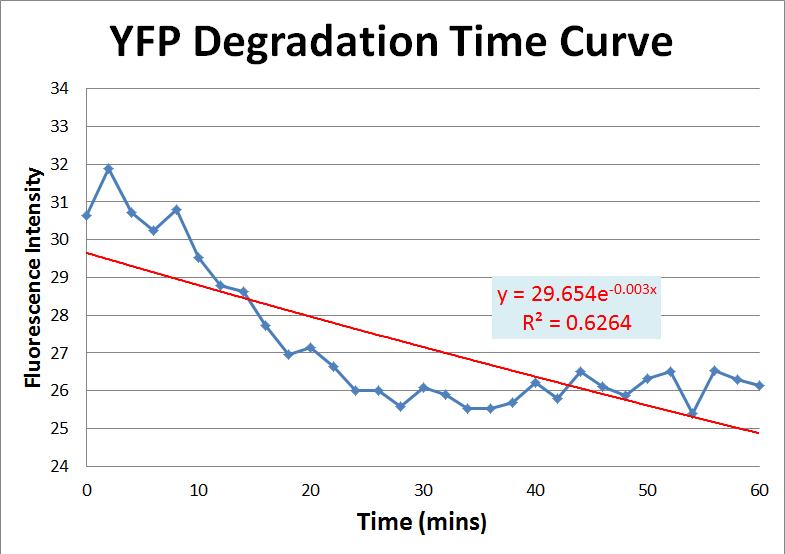Team:NYMU-Taipei/Experiments/Speedy degrader
From 2010.igem.org
| Home | Project Overview | Speedy reporter | Speedy switch | Speedy protein degrader | Experiments and Parts | Applications | F.A.Q | About Us |
Method
1. Selected genes that will be reported are incubated overnight in an LB liquid culture at 37oC and 180-200rpm. This makes sure there are enough cells for experimentation by morning. Positive and negative controls are also incubated.
2. The liquids cultured overnight are diluted into a OD600 of 1 and incubated for 2 more hours.
3. Afterwards, we took out the liquids and centrifuged them for 30 seconds at 13.2k rpm and then discarded the supernatant. We then resuspended the pellets in 2ml ABT medium.
4.We measured the OD600 for the liquid, doing three replicates of 200uL, also noting the OD values.
5.Measurement of fluorescence: Continuous measurement of fluorescence with the excitation/emission wavelengths depending on the fluorescent protein for one hour, with one data point per2 minutes.
6.After measuring the fluorescence, we recorded OD value again to confirm that the E. coli has stopped growing in the ABT medium.
- The optimizing data:
Check if the ODs remained the same to make sure the E. coli does not grow in ABT medium. We took fluorescence averages for all the replicates and sketched a curve and fitted a trend line. Exponential curves were fitted and the half-life of the FP calculated. However, the actual data did not fit the exponential curve as expected.
Reporting Assay
Result
- In our ssrA degradation test, we use fluorescence protein(FP) as our demonstration. The half-life of the FP should be longer than the one with LVA tag. However, the graphs show that the half life of YFP is 236 mins and 181 mins(Fig. 1 & Fig.2), and the half-time of the RFPLVA is 450 mins.(Fig. 3) It seems that our data do not support the theory.
- In Fig. 4, we can see that E. coli stop growing in ABT medium. The OD600 remains the same versus time. Therefore, we can infer that the amount of the E. coli remain almost the same in our fluorescence measurement.
- In the condition of same amount of the E. coli, our data ought to fit the theory. In fact, it does not. The data are doubtful and we think our experiment data were not enough to get the confident results.
Figure & Discussion
 "
"

